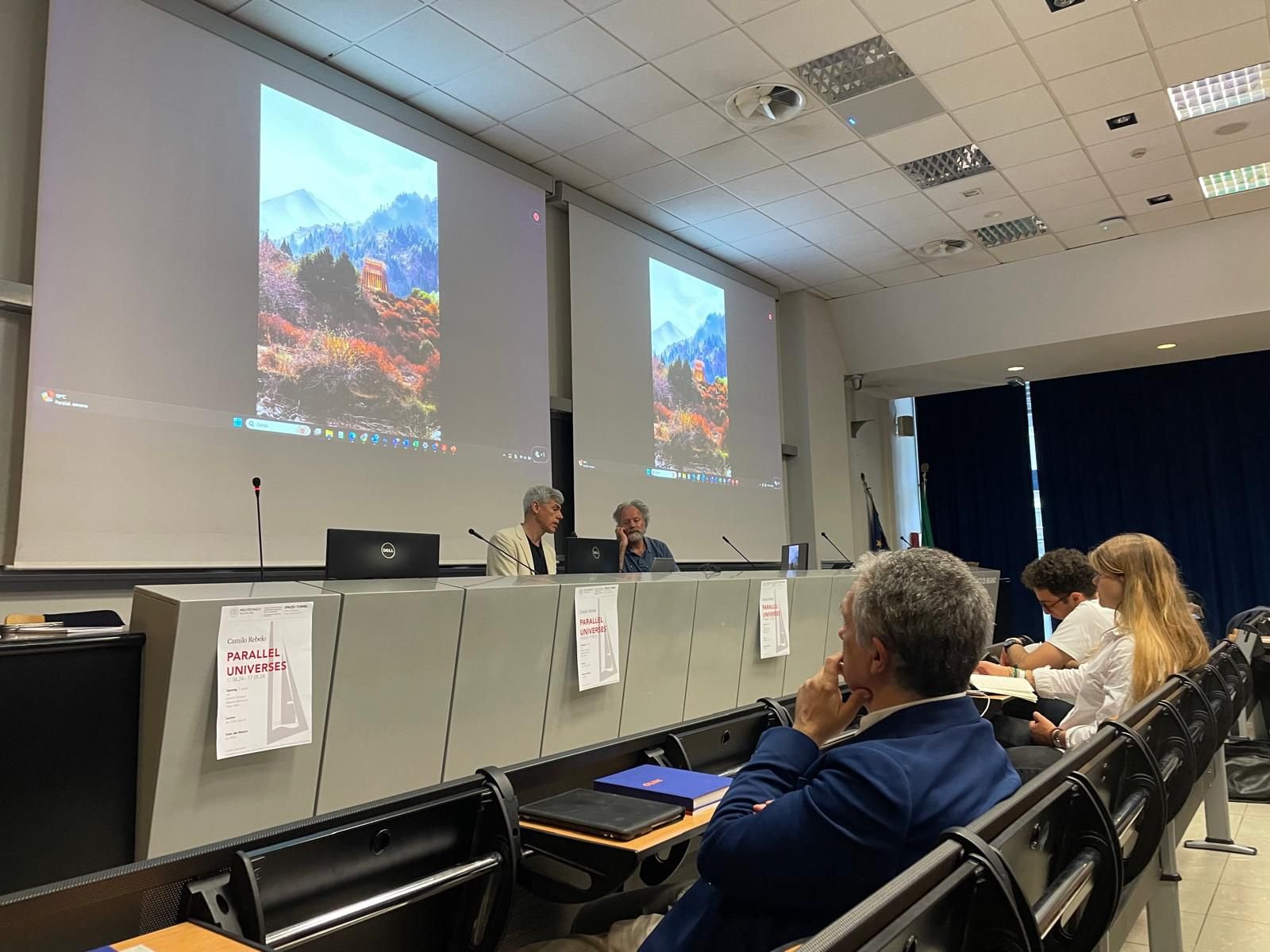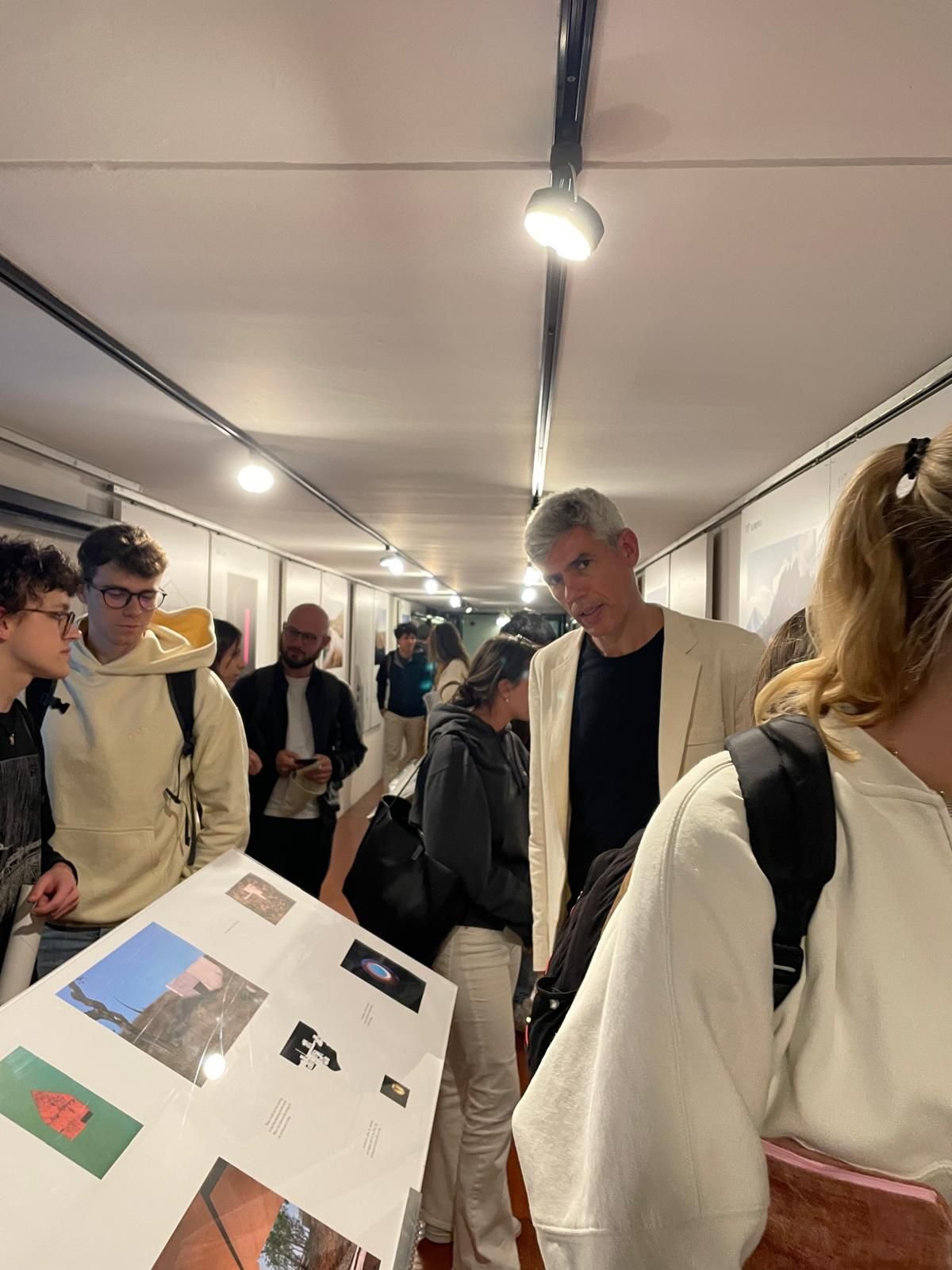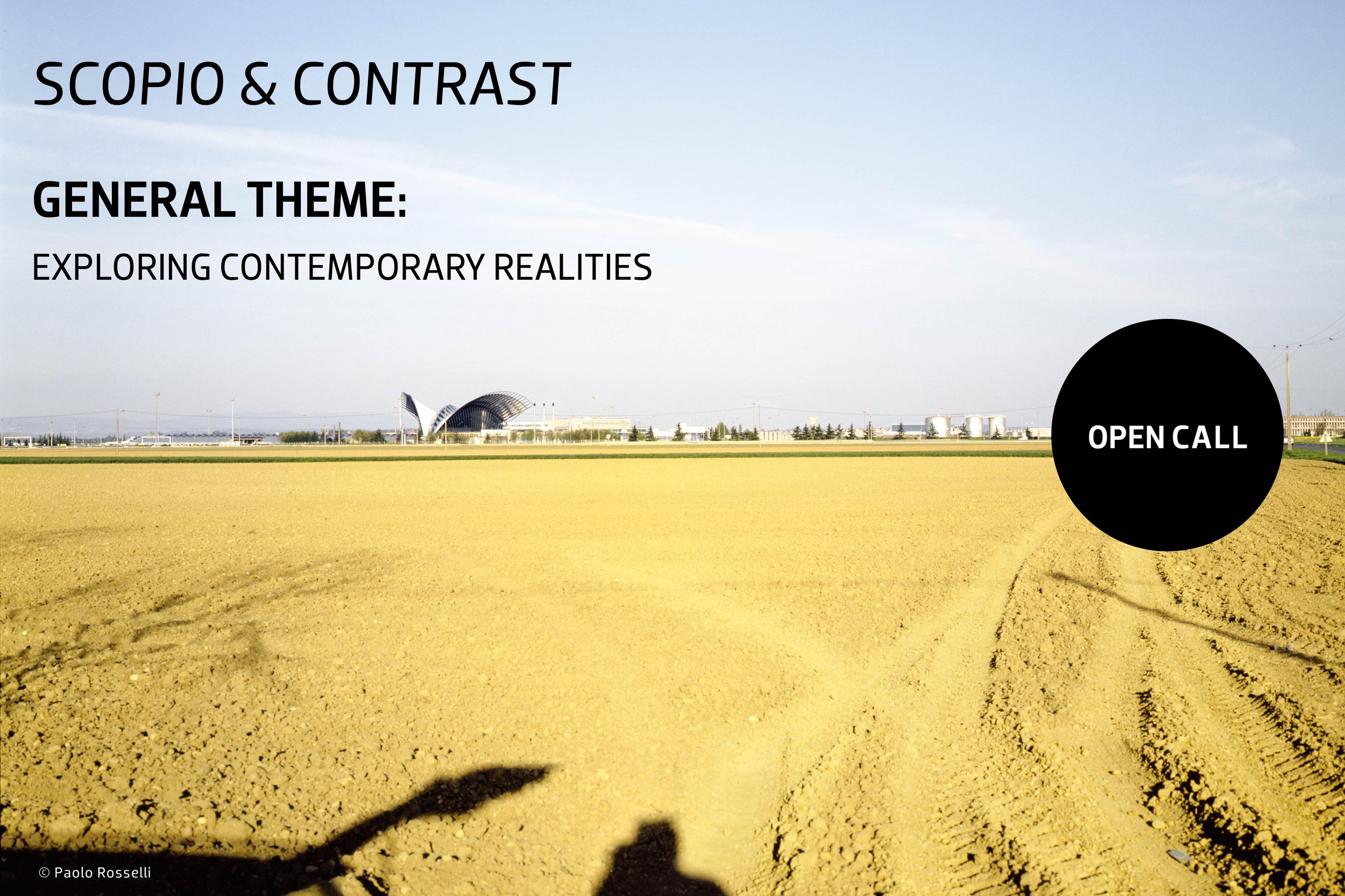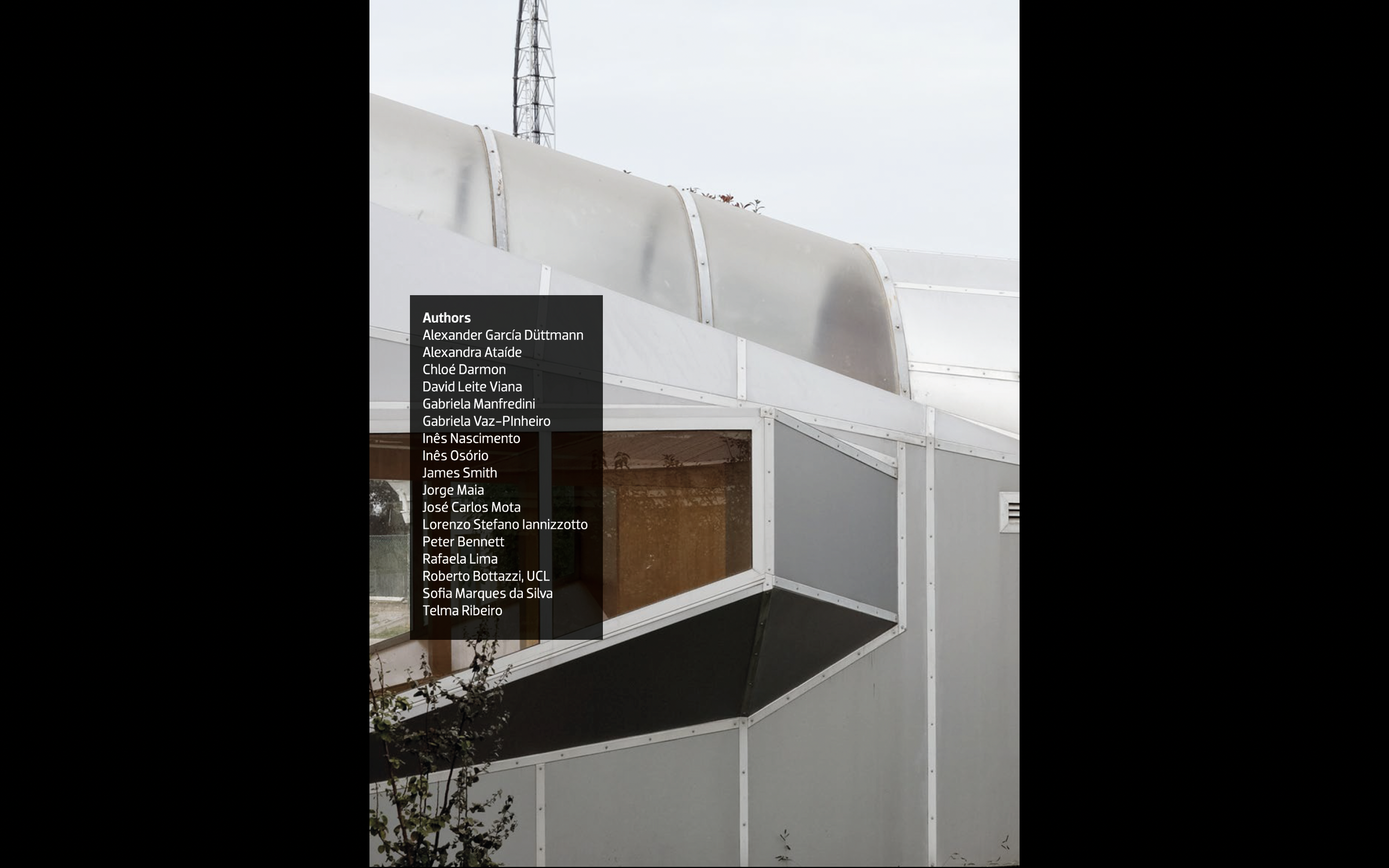Intersection of photography and architecture: scopio Editions, Sophia Journal and photography book Another approach to the works of Álvaro Siza
Lecture AT ETSAB - Barcelona School of Architecture - UPC | JUNE 17 | 10:00/12:00 - Time zone: Europe/Madrid - by Pedro Leão Neto (Faculty of ArCHITECTURE OF University of Porto - FAUP)
Mirar es proyectar. Los arquitectos y la fotografía - Degree in Architecture | ETSAB |EA LLOTJA - Intensive Day | June 2024
LECTURE VIDEO-CALL
Time zone: Europe/Madrid
Information for joining with Google Meet
Video call link: https://meet.google.com/ava-aqsm-wuv
Pedro Leão Neto (Porto, 1962) is an architect and a faculty member of the School of Architecture at the University of Porto (FAUP), where he is also the coordinator of the research group Architectur, Art and Image (AAI). Pedro holds an MA from the in architecture from the University of Porto (1997) and a PhD from the University of Manchester (2002). He has curated several exhibitions on architectural photography and international conferences, namely ‘Sophia Journal International Conference’, now in its ninth edition (2024 / 2025). Pedro is the Editor-in-Chief of Sophia Journal and coordinator of the scopio Editions, which is focused on documentary artistic photography related to architecture.
Cristina Gaston Guirao, PhD - Associate professor in Departament of Architectural Design - ETSAB - Barcelona School of Architecture - UPC, responsible for the program Mirar es proyectar. Los arquitectos y la fotografía - Degree in Architecture | ETSAB |EA LLOTJA - Intensive Day | June 2024 - will open the session. The lecture Intersection of photography and architecture: scopio Editions, Sophia Journal and photography book Another approach to the works of Álvaro Siza will be the responsibility of Pedro Leão Neto (Editor-in-Chief of the Sophia Journal), who will at the end open the floor for any questions concerning the scopio editorial project and Sophia Journal.
The aim of the lecture is to communicate the broader context of scopio Edition, which creates a series of publications in magazine and book format, as well as a photographic archive online, providing information on architecture and the public spaces in Portugal. The work is developed with the support of the research group AAI – FAUP and imany projects have the partnership of Rectory of U. Porto Rectory, U.PORTO PRESS and Porto Town Hall, Department of Culture. The lecture will focus on scopio Editions editorial project, Sophia Journal publication and a selection of photography projects in the book Another approach to the works of Álvaro Siza, being followed by open questions from the public concerning the editorial projects and the work developed by research group AAI-FAUP.
Visit scopio website at http://www.scopionetwork.com/ for recent projects as well as scopio bookstore and Sophia Journal.
Mirar es proyectar. Los arquitectos y la fotografía
Grado en Arquitectura | ETSAB |EA LLOTJA
JORNADA INTENSIVA 17 de junio 2024
Program
9.45-10.00
Recepción en la Llotja en el porche del vestíbulo de entrada
10.15_11.30
Conferencia online por Pedro Leao Neto: Intersection of photography and architecture: scopio Editions, Sophia Journal and photography projects in book Another approach to the works of Álvaro Siza. (en Aula I2)
11.30-12-00 Pausa
12.00_14.30
Taller de cianotipia en Laboratorios de fotografía y de serigrafía.
14.30-15.30
Pausa-comida en Espai Olivera. Podéis traer vuestros tuppers. Nosotras ponemos el postre.
16.00-17.00
Masterclass por Martí Llorens: El arte de conservar. Una aproximación a los orígenes de la fotografía de Arquitectura en la Sala petita.
17.00-18.00
Exposición de fotolibros y cianotipias en la Biblioteca
Unlocking Architectural Discourse and Ideas: scopio Editorial Project
At its core, scopio Editions focuses on contemporary photography related to architecture, the urban landscape, and territories. The presentation will allow to understand the "why" and "how" of scopio, elucidating its nuclear role in stimulating discussions and nurturing ideas within the realm of architecture through the lens of photography.
The presentation intends to highlight the tangible impact of this editorial endeavour, manifesting in a remarkable series of publications in both magazine and book formats, namely the academic journals on the U.Porto OJS platform—Sophia Journal —bridging the worlds of photography, architecture, and art.
This editorial project is closely affiliated with the Faculty of Architecture of the University of Porto (FAUP) and its Centre for Architecture and Urbanism Studies (CEAU) and it has played a pivotal role increating a network of researchers and initiatives around this universe of common interest as in the the present forthcoming conference - Landscapes of Care: Public housing across multiple geographies - crossing theories and practices.
Sophia Journal
Sophia Journal is an international academic, open access, peer-reviewed journal, published by the Centre for Studies in Architecture and Urbanism (CEAU) - Research group Architecture, Art and Image (AAI) at the Faculty of Architecture, University of Porto, Portugal (FAUP), in collaboration with the association Cityscopio and their publishing imprint scopio Editions.
Landscapes of Care: Public housing across multiple geographies: crossing theories and practices
Sophia Journal's third thematic, “Landscapes of Care”, addresses research, projects, experiences, and contemporary photographic and visual practices that focus on how architecture, understood in a broad sense, can help to heal the relationships between man and habitat, as well as the socio-environmental crisis that the planet is experiencing.
This issue, focusing on public housing, allows contributions to be centered on a dynamic reading of the city that is conditional and conditioned by housing typology. Combining architecture, public housing, habitat, and urban planning, we are convoking works that explore an interpretative narrative about housing and those who live in it, pilot projects with communities of practice capable of generating strategic visions about the possible future of city and territory, housing and the lives it (trans)forms, in this ontological relationship between the Man and house.
Another Approach on the Works of Álvaro Siza
Contemporary Documentary Photography on Portuguese Architecture
The book is based on the research work that has been carried out at FAUP since 2015 around Documentary Artistic Photography focused on Portuguese Architecture, namely the research work carried out by the author for his Post-Doctorate at the Faculty of Architecture of the University of Porto, ‘Mapping Documentary Artistic Photography: A Contemporary Look at Architecture in Porto (MFDA-ARP)’ (2018). Pedro Leão Neto's scientific advisors were Jorge Figueira, Associate Professor in the Department of Architecture at the Faculty of Science and Technology of the University of Coimbra between 2010 and 2017 and Visiting Professor in the PhD Programme in Architecture at the Faculty of Architecture of the University of Porto, who supervised the research work, together with José Maçãs de Carvalho, Assistant Professor in the Department of Architecture at the University of Coimbra and at the College of Arts. The reissue of the book (2022) helps to consolidate the research, as well as ensuring the continuity of this study and analysis, namely the particular study on the different perceptions and representations of a set of architectural buildings designed by the architect Álvaro Siza that are photographed by different photographers.
Research group 'Arquitectura, Arte e Imagem — AAI' CEAU.FAUP
FAUP SIGARRA
SCOPIONETWORK WEBSITE
SOPHIA JOURNAL | AAI OJS WEBSITE
scopio Editions is an independent publisher closely affiliated with the Faculty of Architecture of the University of Porto (FAUP) and its Research and Development Centre for Architecture and Urban Studies (CEAU). The scope of interest for scopio Editions broadly encompasses Architecture, Art, and Image (AAI), with a particular focus on Documentary and Artistic Photography related to Architecture, the City, and Territory.
scopio Editions operates with a dynamic structure, featuring both periodic and non-periodic publications. Its primary objective is to disseminate various works and authors who engage with or investigate the AAI field through a critical, exploratory, and innovative approach. The central emphasis is on Photography associated with Architecture, the City, and Territory.












































































































